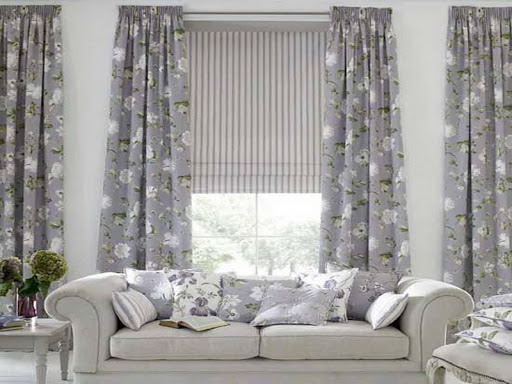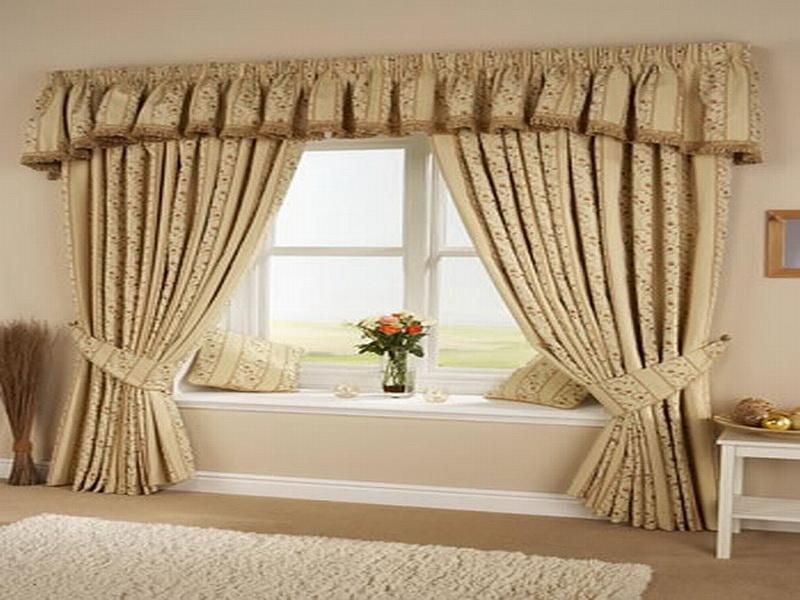Trends in textiles do not exist separately from trends in interior design. Reflections of fashion trends can be found in prints, shades, textures. One way to update an interior and make it more relevant is to change the curtains. Gathered advice on how to choose beautiful curtains and at the same time solve practical problems.
When choosing curtains it is important to focus on three factors:
Composition
The height and width of the curtains will determine what the room will look like. The most advantageous look of curtains in the floor or below the floor by 10-20 cm, so that they are assembled at the bottom of the soft pleats. The height of the ceilings can be increased visually by raising the curtain rod high so that the curtains come down literally from the ceiling and touch the floor.
The curtains not only frame the window and hide from the sun, they also help to adjust the geometry of the room. Use a similar compositional technique to increase the width of the window. Just close the curtain part of the wall outside the window. This creates a visual effect that the window behind the curtains continues.
If you buy ready-made curtains in a store, measure the length from the eaves to the floor in advance. But to perfectly match the proportions, it is better to sew curtains to order.
Lighting
The choice of fabric for the curtains depends on which blackout you want to create. For example, dense curtains are needed in the bedroom if its windows face east, or if you like to sleep during the day, in the nursery and living room, where the sun shines off the TV screen. In the kitchen, lighter fabrics that will diffuse daylight or weightless roller blinds are enough.
Darkening creates blackout fabrics. Blackout curtains can be combined with thin and dense curtains for window decoration. The first thin layer scatters out sunlight and protects from prying eyes. The second dense layer blocks the sun’s rays so you can sleep longer in the morning. In summer you can remove the dense curtains and leave only light tulle so that the room is lighter.
Style
If the interior is designed in the classical style with fillet doors, plaster stucco work, decorative ceiling skirting and curved furniture legs, then the curtains should be chosen in a traditional manner. It can be a multilayer solution with light tulle, dense curtains, brush tiebacks and an elegant bando on top. In modern interiors, more restrained and laconic variants up to single-layer canvases without any additions are appropriate.
The style of the curtains determines the colour, texture, prints as well as the degree of drapery, i.e. the number of folds. Scandinavian interiors, for example, are characterized by low density of draperies. In the closed form curtains are almost not assembled by vertical folds. In the classic interior, on the contrary, deep draperies with an abundance of folds are welcomed.
Curtain tiebacks and lambrequins will help make the interior more gorgeous. Here the rule applies: the more effective the tipping (for example, with brushes or leather), the easier the curtain fabric is. This also applies to other elements in the window ensemble. If the curtain itself is bright, the accessories should be restrained or absent at all. And if there is an interesting curtain rod or gang, then the curtain can be easier.

How to pick up curtains
- Under the color of the walls
Curtains can be matched to the color of the walls, only by changing the shade by a ton or two lighter or darker. Gradation according to the tonal contrast makes the interior three-dimensional and looks advantageous in small spaces.
- Under the color of furniture
Combine curtains with cabinet furniture, especially if it is made in bright colors. You can use curtains to support the shades of natural wood or a spectacular sofa upholstery.
- Under the color of other textiles
Combine curtains with other textiles to create color roll call. Support turquoise curtains with sofa cushions of a close shade and a carpet with blue ornamentation.
It is good when all the textiles in the room exist in harmony and do not interrupt each other: upholstery on the sofa, decorative pillows, tablecloth, bedspread, carpet, bed linen. To achieve harmony, keep samples of fabrics already available to go to the shop for curtains (if you buy them at the last moment).
Cornice selection
The curtain rod should be bought at the same time as or after curtains, as it is a small but very important detail of the composition.
- The smaller the room, the thinner and neater the curtain rod should be.
- To increase the width of the window and allow maximum light into the room, take the ledge longer than the window aperture by 40 cm on each side. Then the curtains will open the entire window area when the window is open.
- Heavy curtains need a strong ledge: wooden, aluminum or profile ledge with a profile wall thickness of at least 1 mm and ready-made holes for fixing.
- For curtains with eyelets and hinges, choose a simple round eave with tips.




